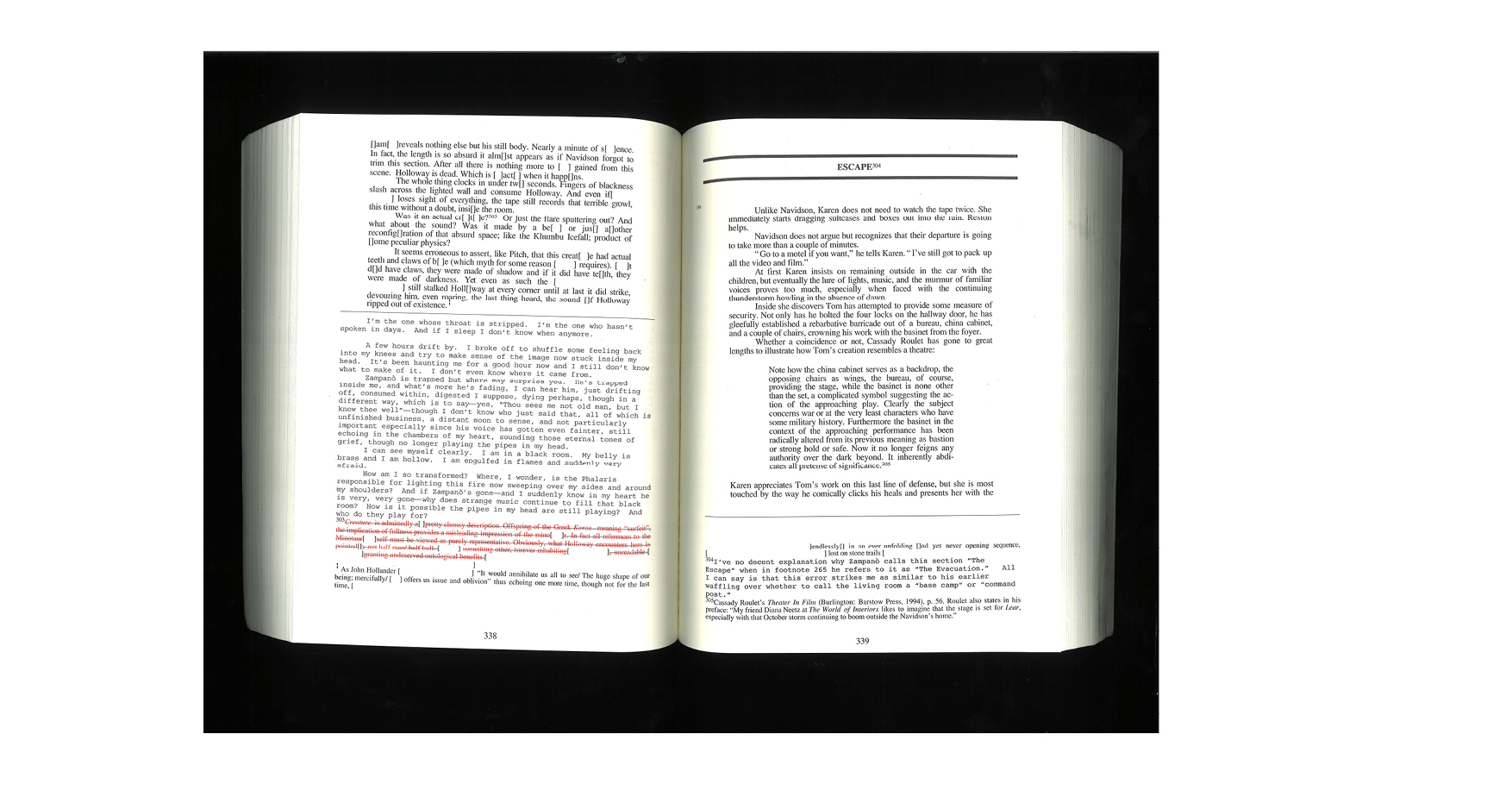understanding texts

see also human writing, machine writing, producing texts, technologising the word
What makes up a text depends on perspective and on overlapping dimensions of text: editorial, technical and social.
The editorial dimension: a sequence. A line of characters and spaces, the particular order that the writer sets these in. Text becomes an object, a carrier of thoughts and feelings, something that can be sent back and forth between participants in a conversation.
The technical dimension: a process. Cybertexts and “ergodic literature” require non-trivial effort to read.1 Examples of this are MUDs (multi-user dungeons/domains/dimensions), which are real-time virtual worlds in which the players construct the story on-the-fly; and Mark Z. Danielewski’s House of Leaves,2 a printed novel that defies a linear narrative structure through its cybertextual materiality.
The social dimension: a framework, a network of texts that elicit further texts.
The library is a collection of texts: not just books, but also files, metadata, scripts and the processes that determine how they are used, and the readers who use them.
Image: A spread from Danielewski’s House of Leaves
